For “Travel Tuesday”: let’s look at a university and prison city in the Texas Piney Woods region, Huntsville, which is just 22 miles north of where I live. Texas has 115 prisons. Six of them are in Huntsville.
 “Experience the warmth and Southern hospitality of the Texas Piney Woods Region. This beautiful forest land offers visitors a glimpse of the history of the Republic of Texas and early statehood times. The Texas Piney Woods offers some of the best fishing, down home cooking, championship golf and family activities in the Lone Star State. Discover the Southern Hospitality of the Texas Piney Woods Region.”
“Experience the warmth and Southern hospitality of the Texas Piney Woods Region. This beautiful forest land offers visitors a glimpse of the history of the Republic of Texas and early statehood times. The Texas Piney Woods offers some of the best fishing, down home cooking, championship golf and family activities in the Lone Star State. Discover the Southern Hospitality of the Texas Piney Woods Region.”

Huntsville, Texas, Home of Sam Houston
“Conveniently located between Houston & Dallas on I-45 South, Huntsville is a great get-a-way.
The Sam Houston Statue is number one on our list partly because it is a great start for a Huntsville tour – you can pick up area maps and brochures in the visitor center.
The statue is one-of-a-kind, standing 77 feet tall constructed by artist David Adickes with 60 tons of concrete and steel.
(From me: It’s probably #1 on the list as it is on the northbound I-45 freeway going into Huntsville, and it dominates the scenery, even from 6 miles away. You can’t miss it!)
Sam Houston Memorial Museum houses the largest collection of General Sam Houston artifacts and recently added a display depicting Margaret Lea Houston, the wife of Sam Houston. The museum is located on 15 acres of Houston’s original homestead where you can tour several buildings in a beautiful park and pond setting.
The Oakwood Cemetery, near downtown, is the final resting place of General Sam Houston, as well as many other people of historical prominence, including 123 confederate soldiers. Renowned Italian sculptor Pompeo Coppini carved Houston on his horse in gleaming white marble. It has an inscription by Andrew Jackson –“THE WORLD WILL TAKE CARE OF HOUSTON’S FAME”.
The Wynne Home Arts Center is on a picturesque 1.5 acre consists of four areas; Main gallery for exhibits, classroom instruction space; ceramics studio and kiln and a gift and souvenir shop. The Wynne Home also includes a visitor center to gather information for your stay in Huntsville and the cultural district.
The historic downtown square paints a picture of rich history. Tromp L’oeil Murals (trick the eye) on the downtown square are unique and extraordinary were created by world-renowned artist Richard Haas.
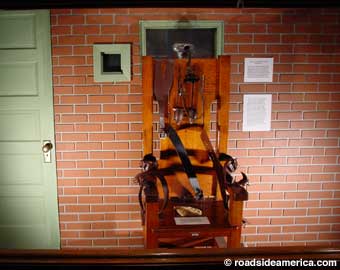 Old Sparky, infamous Texas exit chair for 361 death row inmates.
Old Sparky, infamous Texas exit chair for 361 death row inmates.
The Texas Prison Museum is located just off Interstate 45 North. Interesting artifacts – from inmate arts and crafts, confiscated weapons, photographs, models of prison units, and the infamous electric chair, Old Sparky, can be found here. Visitors also step inside a model of a typical prison cell. On the grounds of the museum is the Texas Department of Criminal Justice Monument and Sesquicentennial Plaza, a tribute to Texans who have made the prison system one of the world’s best throughout its 150-year history. More at: http://www.roadsideamerica.com/story/7814
The Huntsville Walls Unit dates back to 1849 and housed such notables as Clyde Barrow, David Crosby, and John Wesley Hardin. The unit is the site of the death chamber where the State of Texas carries out every execution. It was featured in The Life of David Gale starring Kate Winslet and Kevin Spacey. Also on the tour is the old prison rodeo arena made famous in the 1980s movie Urban Cowboy.
The HEARTS Veterans Museum of Texas houses artifacts and wartime memorabilia from each of this nation’s contemporary wars. Designed as a living history museum, veterans from World War II, Korea, Vietnam, the Cold War, Desert Storm, Afghanistan, and every conflict in between, volunteer to share their stories and military history with visitors of all ages.
Huntsville State Park is open year-round and allows camping and lake activities like kayaking and swimming. Hiking, biking and nature exploration are also popular activities at the park. With a lodge overlooking Lake Raven, this is the perfect location for that board retreat, wedding party or a family reunion.
Raven Nest Golf Course is a natural  terrain, 18-hole course on par with the most expensive private clubs.
terrain, 18-hole course on par with the most expensive private clubs.
The 18-hole course features 6,943 yards of golf from the longest tees for a par of 71. Conveniently located on I-45 South the course blends into the rolling wooded landscape of Huntsville.
Sam Houston State University (known as SHSU or Sam) was founded in 1879 and is the third oldest public institution of higher learning in the State of Texas.
It is one of the oldest purpose-built institutions for the instruction of teachers west of the Mississippi River and the first such institution of its type in Texas. The school is named for one of Texas's founding fathers, Sam Houston, who made his home in the city.
The oak-studded Sam Houston State University main campus sits on 272 acres (1.10 km2) in the central area of Huntsville. Two large agricultural complexes feature a 1,600 acre teaching and research farm and a rodeo arena. The campus also features a planetarium, an observatory, and a 18-hole golf course named Raven Nest. The mall area of the main campus includes two clock towers and a water fountain. SHSU claims to be one of the most "wired" universities in the country.
The campus stood in for the fictional Austin University in the motion picture The Life of David Gale.
Come to Huntsville where a warm welcome awaits!
For more information on Huntsville go to www.huntsvilletexas.com and watch the video or call 800-289-0389.”
_______
President Benjamin Harrison extends borders of Nebraska, Oct 23, 1890:
“On this day in 1890, Benjamin Harrison issues a proclamation that extends the northern boundary of Nebraska into the Dakota territory. The decree also declares that all Indian claims to Nebraska territory have been officially "extinguished."
Harrison was the grandson of famed Indian fighter and treaty negotiator William Henry Harrison, who served one month as president in 1841 before succumbing to illness. The proclamation brought an official end to territorial conflicts in Nebraska between Indians and white settlers that had sporadically erupted from the 1860s to the late 1880s. As white settlement increased in Nebraska after the Homestead Act of 1862 (signed by President Abraham Lincoln), tribes such as the Sioux, Fox, Omaha and Ponca were gradually forced farther north onto reservations that could not sustain a traditional tribal way of life. Many Indians died from malaria, exposure or starvation. Members of the Ponca tried to return to their ancestral homelands in Nebraska and even took their case to court in 1879. The case made national headlines and earned the tribe sympathetic supporters. Although President Chester Arthur signed a decree in 1885 that returned a tiny portion of the Ponca's original lands, he stipulated that all other lands "unselected by" any Indian tribes would be returned to the public domain. This included portions of already established Sioux, Omaha and Ponca reservations. Harrison's proclamation of 1890 re-confirmed the boundaries of Ponca territory within the state of Nebraska and settled the rest of the disputed northern border, speeding settlement of Nebraska by whites.
Federal recognition of the Ponca tribe was officially terminated in 1966. Without their status as a recognized tribe, they lost title to what little land had been left to them by Harrison.
One hundred years after Harrison's proclamation, on October 31, 1990, President George H.W. Bush reinstated the tribe, giving them the right to reestablish their homeland in the state of Nebraska.”
_______
Unknown Soldier is selected, Oct 23, 1921:
“On October 23, 1921, in the French town of Chalons-sur-Marne, an American officer selects the body of the first "Unknown Soldier" to be honored among the approximately 77,000 United States servicemen killed on the Western Front during World War I.
According to the official records of the Army Graves Registration Service deposited in the U.S. National Archives in Washington, four bodies were transported to Chalons from the cemeteries of Aisne-Marne, Somme, Meuse-Argonne and Saint-Mihiel. All were great battlegrounds, and the latter two regions were the sites of two offensive operations in which American troops took a leading role in the decisive summer and fall of 1918. As the service records stated, the identity of the bodies was completely unknown: "The original records showing the internment of these bodies were searched and the four bodies selected represented the remains of soldiers of which there was absolutely no indication as to name, rank, organization or date of death."
The four bodies arrived at the Hotel de Ville in Chalons-sur-Marne on October 23, 1921. At 10 o’clock the next morning, French and American officials entered a hall where the four caskets were displayed, each draped with an American flag. Sergeant Edward Younger, the man given the task of making the selection, carried a spray of white roses with which to mark the chosen casket. According to the official account, Younger "entered the chamber in which the bodies of the four Unknown Soldiers lay, circled the caskets three times, then silently placed the flowers on the third casket from the left. He faced the body, stood at attention and saluted."
Bearing the inscription "An Unknown American who gave his life in the World War," the chosen casket traveled to Paris and then to Le Havre, France, where it would board the cruiser Olympia for the voyage across the Atlantic. Once back in the United States, the Unknown Soldier was buried in Arlington National Cemetery, near Washington, D.C.”
_______
Yesterday:
The little kitten has gained another ounce, and she still won’t eat from a dish. I have been putting a little baby cereal in her bottle for about a week now, to give her extra sustenance. But when I try to put some pâté canned food in her mouth, she won’t have anything to do with it, and clamors for her bottle. So I fooled her and put some of that pâté in her bottle, too, and she drank it. It looks like I am going to have to buy another can of kitten milk.
I spent some time getting duplicate pictures out of the computer, and deleted some downloads that people had sent me. Not much to show for it, but I was busy all day.




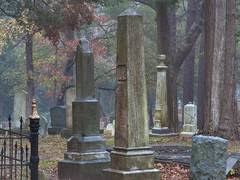

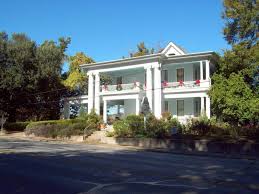

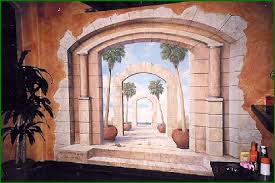

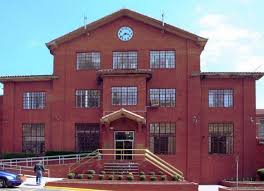

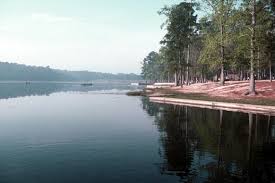
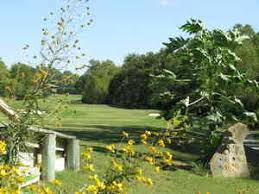
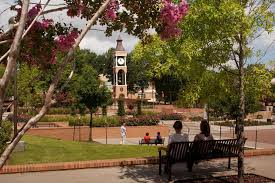















2 comments:
It is funny how time flies when you try to work on a computer which is suppose to safe us time. . . Yeh right.
Thanks for your oh-so-true comment, DD
I think it is because there are so many interesting places to see, and things to learn in a computer, that they take up so much time.
Happy Tails and Trails, Penny.
Post a Comment